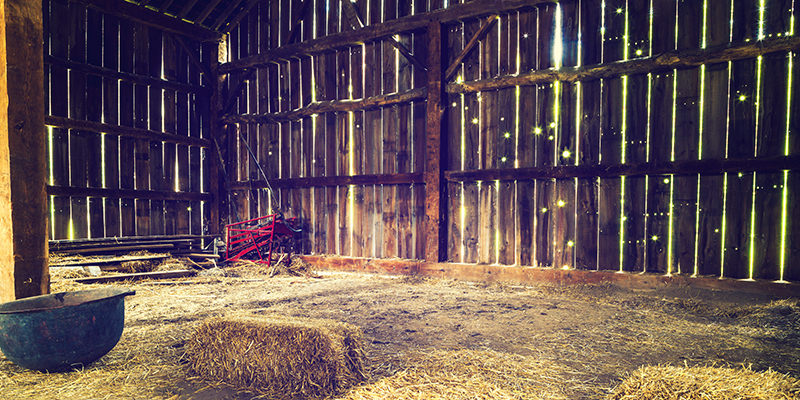The lexicon of wine terminology is as flexible as our verbal ingenuity:
“You taste Milk Duds in there? Hmmm. I get notes of rotted out Jack-o-Lantern.”
“You’re crazy, I don’t get a hint of Jack-o-Lantern, not a hint.”
“A scary-faced one, not a cheerful one.”
“Ahhhhhhh, yes.”
In that conversation, with that particular palate subjectivity, those terms apply meaningfully to a glass of wine. A really, really weird glass of wine. In the larger wine world, of course, you may not encounter as many flights of subjective fancy, since professionals tend to rely (and be aggressively tested on) certain commonalities from bottle to bottle. One such repeat factor, surprisingly: barnyard.
Not grapes stomped by Mr. Ed or wine made in the ambient environment of Babe and his herd of talking sheep. Barnyard is a very particular, and very noticeable characteristic that can be found in a variety of wines. It’s also, depending on the amount of “barnyard,” a bit of a euphemism. (Think of it this way: there’s a lot of stuff that happens in a barnyard, particularly on the floor of a barnyard, from animals. A wine with too much, er, barnyard can smell quite a bit like this…)
The barnyard factor comes from one particular organism: Brettanomyces, or “Brett” for short, a kind of wild yeast that can be found on grape skins or in oak barrels that sometimes makes its way into the winemaking process. The result of Brett tainting a wine may not be entirely bad. Yes, it might yield compounds that smell like Band-Aid (the classic Bretty flavor), rancidity, cheese, or horse stable (our “barnyard”) but they also might yield compounds with aromas like bacon, leather, and spices.
And let’s not forget, some of us kinda like a bit of barnyard in our wine. It’s divisive, but it’s got a certain “funk” factor—and anyone who drinks Brett beer knows what we mean. Best case scenario, the barnyard works with the style of wine, just a tinge of something wooden and leathery and slightly feral playing around in the complexity of our wine.
More specifically, red wine, we should say, because for reasons not entirely understood, red wines tend to have more instances of “Brett,” and that’s why you’ll find “barnyard”—if ever you do—in a bottle of red. If you do find it, don’t run away immediately. Depending on the style, barnyard can give the wine a kind of rustic, rough-hewn, dry/dank hay character (which, in certain complex reds, works just fine), but it might overpower, especially where delicate fruit is involved. So keep a second bottle handy, just in case the wine actually smells like, well, “$#@!.”

